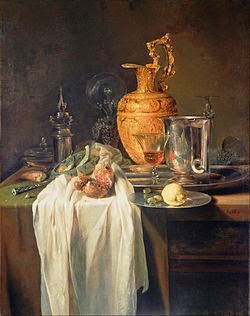I'm not going to include images of the session this time because I will be taking a selection of artworks into Lytham Library in the future to share with the people of Art Circle who meet there and I don't want to pre-empt thoughts and ideas.
So apologies for that and here's work by two "revolutionary" artists or artists who work with circles instead.
 |
| Cornelia Parker: Thirty Pieces of Silver (silver & copper wire) 1988-9 |
 |
| Thirty Pieces of Silver: detail |
Cornelia Parker's work seems to defy gravity. Thirty Pieces of Silver hovers about a foot above the floor so you look down to view it. The shadows of the piece are part of the installation which move as you move around the work. Captivating...
Parker also depicted an exploded shed which is as eerie as it is captivating. Do check it out on the Tate's website via this link. "an exploded view"
 |
| Andy Goldsworthy: Snow Circle (snow) 1987 Japan |
[He now lives in Scotland.]
If you would like me to bring c.art.ed or p.arty to your place, please contact me.
The sessions work beautifully with Arts Award and covers PSHE (personal, social and health education) and Citizenship in the National Curriculum from Year 5. GCSE and A Level students have also used the session as a starting point for making their own work.
























